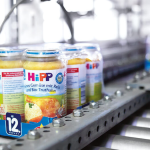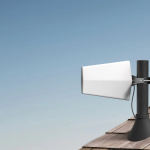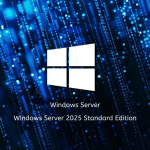In the digital marketing landscape, advertisers strive to maximize their return on investment by optimizing sales funnels to boost conversions. A well-optimized sales funnel can guide potential customers from awareness to purchase efficiently. With the rise of connected TV advertising and other digital channels, understanding how to refine your sales funnel is essential. In this article, we’ll explore strategies for effective sales funnel optimization to enhance conversion rates and improve overall campaign performance.
Understanding the Sales Funnel
The sales funnel is a marketing model that illustrates the journey potential customers take from initial awareness to final purchase. It is typically divided into several stages:
- Awareness: Potential customers first discover your brand or product.
- Interest: Prospects begin to show an interest in what you offer.
- Consideration: These interested leads assess your products or services.
- Intent: Prospects display a clear intention to purchase.
- Purchase: The prospect makes the purchase and becomes a customer.
- Loyalty and Advocacy: In these post-purchase stages, customers return for more and may become brand advocates.
Understanding these stages is crucial for identifying where prospects drop off and how to optimize each phase for better conversion rates.
Tips for Optimizing Each Stage of the Sales Funnel
1. Awareness: Capturing Attention
In the awareness stage, your goal is to reach as many potential customers as possible. Here are some strategies:
- Leverage Connected TV Advertising: With the growing popularity of streaming services, connected TV advertising offers a unique opportunity to reach a broad audience. Tailor your ads to be engaging and memorable to capture viewer attention.
- Utilize Social Media: Platforms like Facebook, Instagram, and LinkedIn are effective for reaching targeted audiences. Create visually appealing content and use targeted ads to increase brand visibility.
- SEO and Content Marketing: Optimize your website for search engines and produce high-quality content that addresses the needs and interests of your target audience. This helps attract organic traffic and enhances brand awareness.
2. Interest: Engaging Prospects
Once you’ve captured attention, the next step is to engage prospects and build their interest in your offerings:
- Personalized Email Campaigns: Use data-driven insights to craft personalized email campaigns that address the specific interests and pain points of your leads.
- Content Marketing: Offer valuable content, such as ebooks, webinars, and blog posts, that educates and informs your audience about your products or services. This establishes your brand as a thought leader and builds trust.
- Interactive Experiences: Create interactive content like quizzes, polls, or assessments that engage users and encourage them to learn more about your offerings.
3. Consideration: Nurturing Leads
During the consideration stage, your goal is to nurture leads and provide them with the information they need to make informed decisions:
- Retargeting Ads: Use programmatic advertising to retarget prospects who have shown interest in your products but haven’t yet converted. Tailor your ads to address their specific needs and concerns.
- Product Demonstrations and Trials: Offer free trials, demos, or samples to give prospects a firsthand experience of your products. This reduces perceived risk and encourages conversion.
- Customer Testimonials and Case Studies: Showcase real-life success stories and testimonials from satisfied customers. Social proof can significantly influence decision-making.
4. Intent: Encouraging Action
At this stage, prospects are on the verge of making a purchase decision. Here’s how to encourage action:
- Clear Calls-to-Action (CTAs): Ensure your CTAs are prominent, compelling, and clearly communicate the next steps. Use action-oriented language that encourages immediate action.
- Limited-Time Offers and Promotions: Create a sense of urgency by offering limited-time discounts or promotions. This can motivate prospects to make a purchase decision sooner.
- Simplified Checkout Process: Streamline your checkout process to minimize friction. A complicated or lengthy checkout can lead to cart abandonment.
5. Purchase: Closing the Deal
Once a prospect is ready to buy, focus on closing the deal efficiently:
- Seamless User Experience: Ensure that your website or app provides a seamless and intuitive user experience. Any technical issues can deter prospects from completing their purchases.
- Multiple Payment Options: Offer a variety of payment methods to cater to different customer preferences, making it easier for them to complete their transactions.
- Confirmation and Thank You Emails: Send immediate confirmation emails upon purchase, thanking customers for their purchase and providing them with essential details about their order.
6. Loyalty and Advocacy: Building Long-Term Relationships
The sales funnel doesn’t end with a purchase. Focus on nurturing long-term relationships with your customers:
- Post-Purchase Engagement: Keep customers engaged with follow-up emails, product recommendations, and personalized offers. This encourages repeat purchases and increases customer lifetime value.
- Customer Support and Service: Provide excellent customer service to address any issues or questions promptly. Satisfied customers are more likely to become brand advocates.
- Loyalty Programs: Implement loyalty programs that reward repeat customers with discounts, exclusive offers, or early access to new products. This fosters brand loyalty and advocacy.
Leveraging Performance Marketing and Demand Generation
Performance marketing and demand generation play critical roles in optimizing sales funnels and boosting conversions. These approaches focus on measurable outcomes and data-driven strategies to enhance each stage of the funnel.
Performance Marketing
Performance marketing emphasizes tracking and optimizing campaigns based on specific metrics and goals. Here’s how it can enhance your sales funnel:
● Data-Driven Insights: Leverage analytics tools to understand customer behavior and preferences. These insights can guide your marketing strategies, allowing you to tailor your efforts for maximum impact.
● A/B Testing: Regularly test various elements of your campaigns, such as ad creatives, landing pages, and CTAs, to determine what resonates most with your audience.
● ROI Measurement: Track the return on investment for each marketing channel to allocate resources effectively and concentrate on high-performing strategies.
Demand Generation
Demand generation focuses on creating awareness and interest in your products or services to drive customer acquisition. Here are some tips for effective demand generation:
- Targeted Campaigns: Use segmentation and targeting to reach specific audience segments with relevant messaging. This increases the likelihood of capturing qualified leads.
- Thought Leadership Content: Produce content that showcases your expertise and addresses industry trends. Thought leadership establishes credibility and attracts potential customers.
- Lead Scoring: Implement lead scoring to prioritize and nurture high-potential leads. This ensures your sales team focuses on prospects most likely to convert.
The Role of OTT Advertising in Sales Funnel Optimization
Over-the-top (OTT) advertising is becoming increasingly important for sales funnel optimization, especially in the context of connected TV advertising. Here’s how OTT advertising can benefit your sales funnel:
- Enhanced Targeting: OTT platforms offer advanced targeting options, allowing you to reach specific audience segments with personalized ads.
- Engaging Content: OTT advertising enables you to deliver engaging, high-quality video content that captures viewer attention and encourages interaction.
- Cross-Device Reach: OTT ads can be displayed across various devices, increasing your brand’s reach and visibility.
- Measurable Impact: OTT platforms provide robust analytics and reporting tools that help you measure the effectiveness of your campaigns and make data-driven decisions.
Conclusion
Optimizing your sales funnel is crucial for boosting conversions and achieving marketing success. By understanding the different stages of the funnel and implementing strategies for each phase, you can guide prospects smoothly from awareness to purchase. Embrace the power of connected TV advertising, OTT advertising, and performance marketing to refine your sales funnel and enhance your overall campaign performance. By focusing on the customer journey and leveraging data-driven insights, you can increase conversions and build lasting relationships with your audience.
Lynn Martelli is an editor at Readability. She received her MFA in Creative Writing from Antioch University and has worked as an editor for over 10 years. Lynn has edited a wide variety of books, including fiction, non-fiction, memoirs, and more. In her free time, Lynn enjoys reading, writing, and spending time with her family and friends.















